 |
 |
 |
 |
 |
 |
Distribution and characteristics
We can see 16 bumblebee species including one alien species in Japan.
This page introduces a simple method of species identification by combining the location, color pattern, and body shape.
TORA-MARUHANABACHI, Bombus diversus Smith, 1869
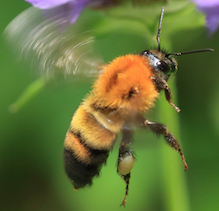 |
The thorax is orange, and the abdomen is orange with black stripes like "tiger." Older workers become a dull color. Individuals inhabiting in cooler areas have a more yellowish color. The subspecies B. diversus tersatus inhabits Hokkaido island (the northern island of Japan), and their color tends to become yellowish. Their face and tongue are long. |
KO-MARUHANABACHI, Bombus ardens Smith, 1879
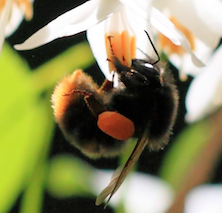 |  | 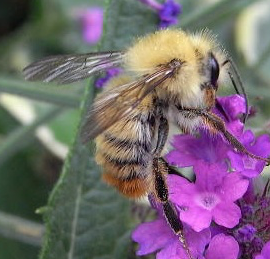
|
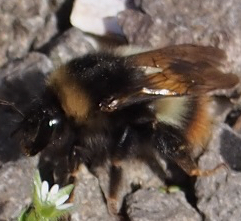 | 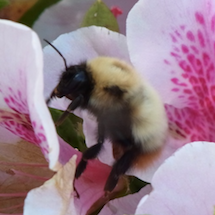 | Females of subspecies B. ardens tsushimanus in Tsushima islands (the offshore of northern Kyushu island) are cream-yellow body with orange tail. They are similar to males, but they have black hair on the head and no black stripes on the abdomen (photo on the right). Male's color pattern of both subspecies is the same as that of the original subspecies. |
KURO-MARUHANABACHI, Bombus ignitus Smith, 1869
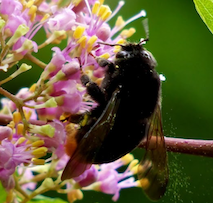 | 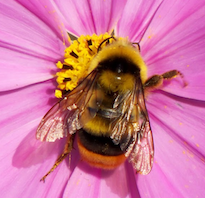
| Females of B. ignitus are black body with orange tail (photo on the left) like females of B. ardens ardens. Their hair is short and abdomen looks like a rounded rectangle rather than a round. Their face has almost the same height and width. Males are yellow body with orange tail and black bands on the thorax and abdomen (photo on the right). |
OO-MARUHANABACHI, Bombus hypocrita Perez, 1905
 | 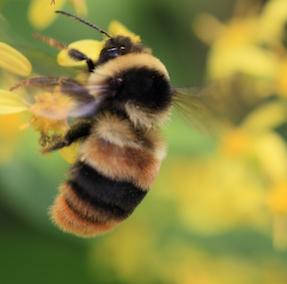
| Females of the original subspecies B. hypocrita hypocrita in Honshu, Shikoku, and Kyushu islands are black body with orange tail and a cream band on the upper thorax and a light yellow band on the abdomen (photo on the left). Females of the subspecies B. hypocrita sapporoensis in Hokkaido island have broader bands. Males of B. hypocrita are yellow body with orange tail and black bands (photo on the right) like males of B. ignitus, but they have black hair on the head, and lighter yellow hair on body. |
MIYAMA-MARUHANABACHI, Bombus honshuensis Tkalcu, 1968
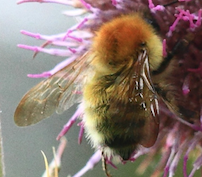 |
Females of B. honshuensis have orange thorax with lemon yellow on both sides, and cream-yellow abdomen. They look like females of B. diversus, but they have no clear black stripes. Some males of B. honshuensis have a more yellowish color. |
HIME-MARUHANABACHI, Bombus beaticola Tkalcu, 1968
 | 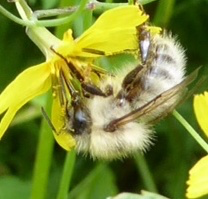 | 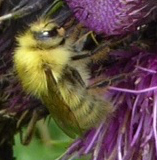 |
Female's body color is ranging from cream, yellow, to light brown. Some of them have a black band on the thorax (photo on the left), and others have an unclear or no band (photo on the center). Males have a more yellowish color with no band (photo on the right). Queens are cream-yellow body with orange tail and black bands on the thorax and abdomen. |
NIPPON-YADORI-MARUHANABACHI, Bombus norvegicus japonicus Yasumatsu, 1937
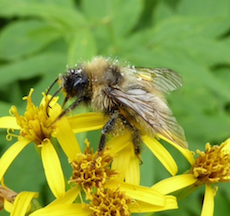 |
Their color pattern is similar to their host B. beaticola. They have sparse hair and no pollen basket because they do not need to collect pollen. |
NISE-HAIIRO-MARUHANABACHI / HAIIRO-MARUHANABACHI, Bombus pseudobaicalensis Vogt, 1911 / Bombus deuteronymus Schulz, 1906
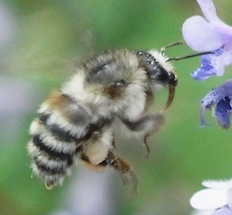 |
B. pseudobaicalensis is common species in Hokkaido island from late May to October. They are observed in Hokkaido island, Aomori and Iwate prefectures in Honshu island. B. deuteronymus deuteronymus inhabits Hokkaido island whereas B. deuteronymus maruhanabachi inhabits a limited area in Honshu island. B. deuteronymus maruhanabachi is a rare subspecies. They have gray and slightly yellow body. There is a dark color area on the center of thorax, and clear black stripes on the abdomen. |
USURI-MARUHANABACHI, Bombus ussurensis Radoszkowski, 1877
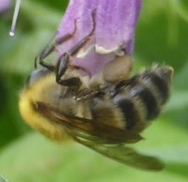 |
Their thorax color is olive green, but sometimes almost light yellowish brown. They have clear black stripes on the abdomen. Their body shape is similar to B. diversus and B. consobrinus. |
NAGA-MARUHANABACHI, Bombus consobrinus Dahlbom, 1832
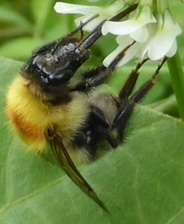 |
Their thorax color is yellow with a red band. Their body shape is similar to B. diversus and B. ussurensis, but their tongue is longer than that of them. |
EZO-NAGA-MARUHANABACHI, Bombus yezoensis Matsumura, 1932
 |
They are observed in Hokkaido island from June to September. Their color is yellow-brown with clear black bands on the thorax and abdomen. Their tongue is longer than that of B. diversus. |
SHURENKU-MARUHANABACHI, Bombus schrencki Morawitz, 1881
 |
Their color is similar to that of B. honshuensis, but B. schrencki does not inhabit Honshu island. Their color is also similar to that of B. diversus, but they have lemon yellow hair on both side of the thorax, and no clear black bands on the abdomen. |
AKA-MARUHANABACHI, Bombus hypnorum Linnaeus, 1758
 |
AKA-NARUHANABACHI in Japanese means red-bumblebee. They often have a reddish-brown color, but some have orange or yellow-brown. They are similar to deep orange type of B. diversus, but their tail is white. Their body is rounder than that of B. diversus. |
NOSAPPU-MARUHANABACHI, Bombus florilegus Panfilov, 1956
 |
They are observed in a limited area of Hokkaido island from June to September. They are black body with yellow bands on the upper thorax and abdomen. They look like B. terrestris, but they have black tail and lighter yellow bands. However, they sometimes have white hair on tail, which makes difficult to distinguish from B. terrestris. |
SEIYOU-OO-MARUHANABACHI, Bombus terrestris Linnaeus, 1758
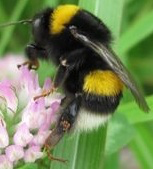 |
They emerge in May, and their colonies collapse in October. They have a clear color pattern of black body with white tail and deep yellow bands on the upper thorax and abdomen. |
